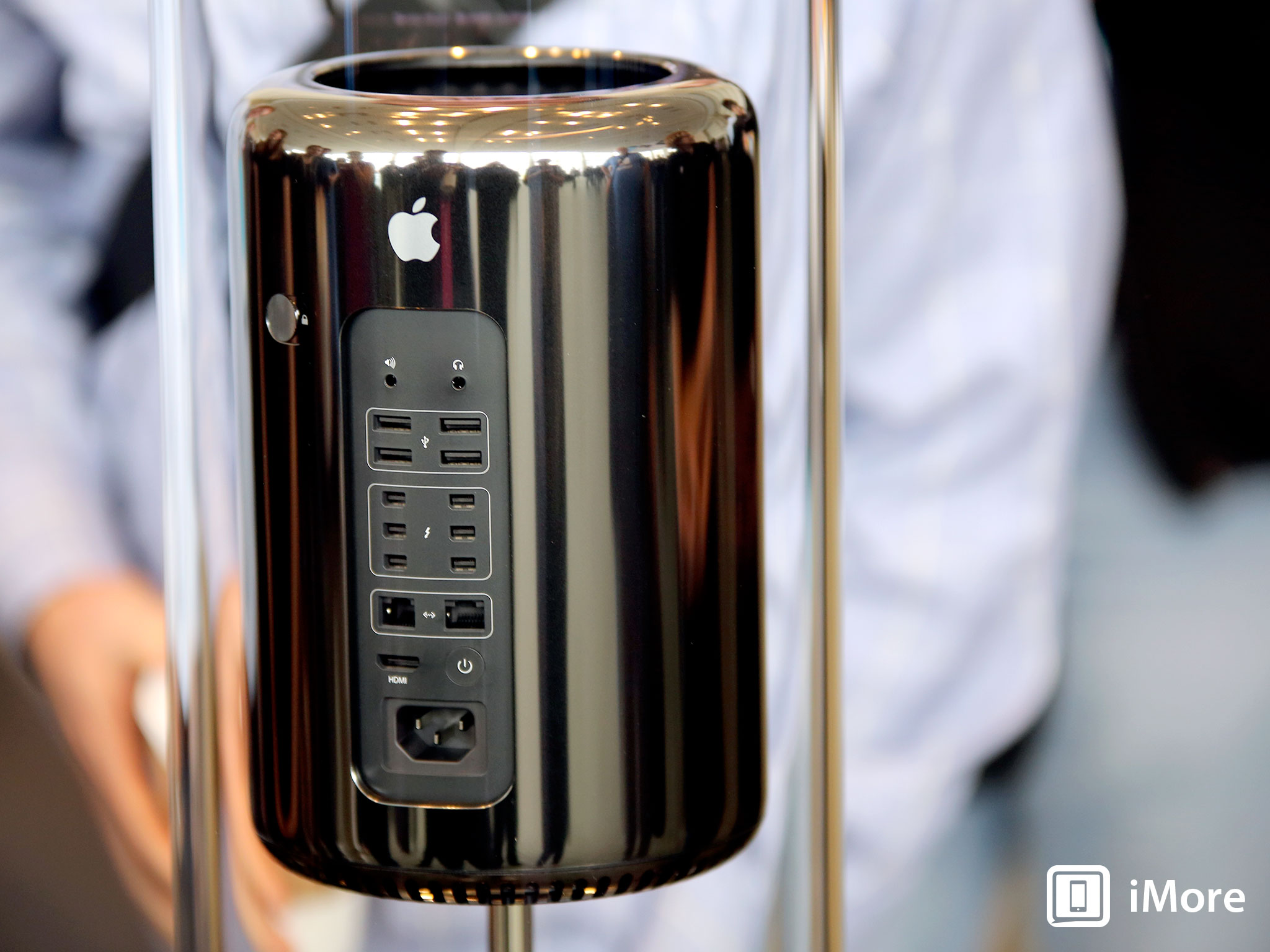Never mind Retina Displays: Get ready for 4K on the new Mac Pro

Last year Apple introduced MacBook Pros with Retina Displays, and many folks watching the Mac market have assumed that it's only a matter of time before the rest of the line has them too. That may be true, but the newly redesigned Mac Pro is going to leapfrog that by offering something that so far, no other Mac can handle - 4K video. And not just 4K video, but 4K video on three screens.
The Mac Pro doesn't have a built-in display, of course. What it does have is Thunderbolt 2 and dual AMD FirePro graphics processing units with up to six gigabytes of dedicated VRAM. That's enough horsepower to drive three 4K displays simultaneously - ideal for pro video workstations, visual effects work in cinema, and film editing.
That only scratches the surface of what the Mac Pro will be able to do. It even has a dedicated HDMI port that conforms to the 1.4 specification, which supports 4K video, so you'll be able to connect it directly to a 4K "broadcast monitor" to see how the images you're working on will look in real life.
Now, 4K processing on the Mac is nothing new. Blackmagic Design, for example, makes switchers, capture and playback cards designed to work with Macs that do 4K. But having 4K native support is an entirely different story.
What is 4K?
4K is also known UHDTV, or Ultra High Definition TV. 4K operates at 3840 x 2160 resolution, four times what today's HDTVs do. That sounds like a lot, and it is. It's 8.3 million individual pixels, compared to 2.0 million pixels for a standard 1080p HD signal. As a point of comparison, Apple's Thunderbolt Display sports a resolution of 2560 x 1440, or about 3.3 million pixels.
4K is a lot of pixels to push, which is why you need something like Thunderbolt 2 or HDMI 1.4 to push them all. It's also why you need powerful graphics processors like the FirePro to process that data.
Some companies have garnered a fair degree of publicity for themselves by introducing 4K televisions for home use, but so far, they're the rarified domain of people with big media rooms who can afford really gargantuan TVs. 84-inch UHD sets were the first to appear; now they've gone down in size to 55-inch or smaller.
Master your iPhone in minutes
iMore offers spot-on advice and guidance from our team of experts, with decades of Apple device experience to lean on. Learn more with iMore!
Blu-ray Disc (BD) resolution maxes out at 1920 x 1080, for example - that's "standard" HD resolution. Some companies have introduced BD players that will "upscale" to 4K resolution (and 4K TVs will upscale HD content themselves, as well); Sony's also shown off a 4K video player and a download service that provides native 4K content.
Why is 4K important?
4K is used in cinema. The past decade has seen a big switch in most movie theaters from traditional film projection to digital film projection. No longer are movie theater projectionists rolling big spools of film from reels - they're showing movies using LCD projectors, Digital Micromirror Devices (DMDs) and similar technology.
The benefit for you is that the days of seeing scratches and dust are over: you watch a pristine "print" of the movie whether you show up on opening weekend or three weeks later. Digital movies don't wear out like film prints do. The advantage for the film distributors and the movie theaters is that there's no actual bulky, fragile film to transport or maintain - movies can be downloaded, depending on the connection to the theater, or delivered on a hard drive.
Video and film editing, special effects and post-production is still a vital business for Apple, and it's a place where the Mac Pro had done well over the years - but the Mac Pro hasn't aged well for the new era of digital filmmaking. By incorporating the massive bandwidth of Thunderbolt 2 (six ports, each operating at 20 Gbps bandwidth), the prodigious parallel processing power of the Mac Pro's CPUs and GPUs, and by streamlining the throughput as much as possible, Apple's tried to optimize the new Mac Pro to be a digital filmmaking powerhouse.
Still pricy
Small form-factor 4K displays are still pretty expensive. To get a 32-inch 4K monitor, you're still going to spend upwards of $3,000 at the moment. That price will come down as the technology is more broadly used, though.
But Apple's never been known to skimp on monitors. The company advertises only one model at present - the 27-inch Thunderbolt Display. It's available at a wallet-crushing $999. It has some nice features that make it particularly convenient for a Thunderbolt-equipped Apple computer user, like built in MagSafe power adapter for laptops, USB, FireWire, Thunderbolt and Gigabit Ethernet - but it's also squarely in the high end of the 27-inch display market.
Apple probably won't compete on price with any new 4K display right out of the gate. But given the dearth of 4K monitors available today (Asus is one of the few companies to have one in production), it wouldn't surprise me at all to see Apple offer a new screen for the Mac Pro.
Apple is not just making the new Mac Pro ready for 4K but is really pushing the capability as one of the device's big selling points. That should give you some idea of who they think is a key market for the new device - it's squarely aimed at creative professionals in film, television and video. People who are working with 4K content today or preparing to do so, and need a computer that can keep up with them.
4K isn't something that every Mac owner should want or need. In fact, it's going to remain a pretty specialized technology for a while, until the price comes down and programming becomes available for it.
Back to the Retina Display
"Retina Display" is a marketing term invented by Apple to describe displays that have high enough resolution so you don't notice individual pixels at a typical viewing distance. That's a bit subjective, and the pixel density of devices labeled with Retina Displays has varied. The iPhone, for example, sports a 326 pixel per inch density. The 15-inch MacBook Pro has a pixel density of about 220 pixels per inch, while the 13-inch rMBP has about a 227 PPI density.
Right now, Apple's 27-inch Thunderbolt Display has a 109 PPI density. Even Asus' 31.5-inch 4K-native display, the PQ321Q, sports a pixel density of only about 140 pixels per inch. If we accept that you have to go well north of 200 pixels per inch for a screen to be a "Retina Display," none of these even come close. Any way you slice it, it appears that we're still a fair distance still from a Retina Display in a larger form factor.
Retina Display or no, the new Mac Pro is set to push video editing and processing on the Mac in new directions. We'll have to wait to see the fruits of that effort for a while, but make no mistake - the new Mac Pro is set to change things in a big way.

